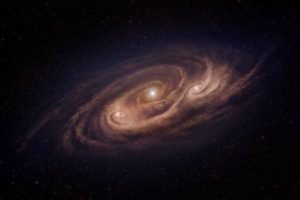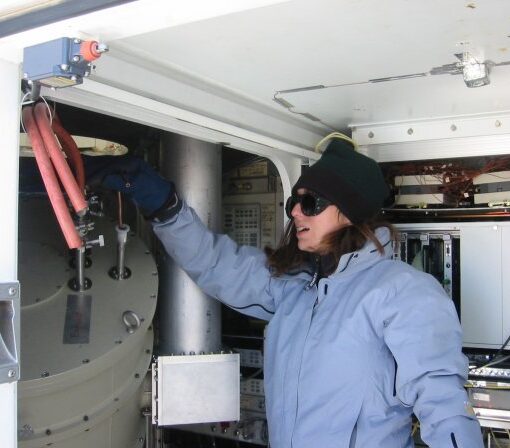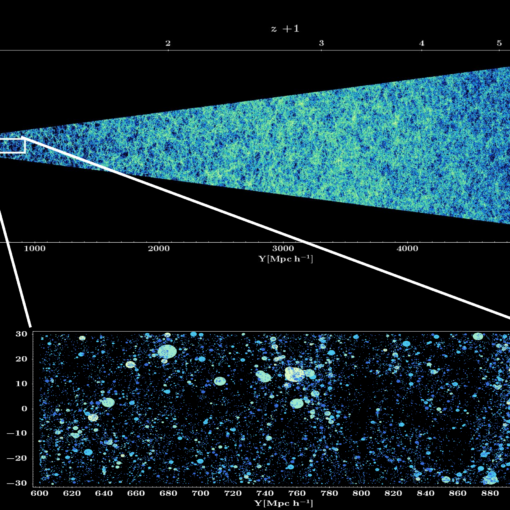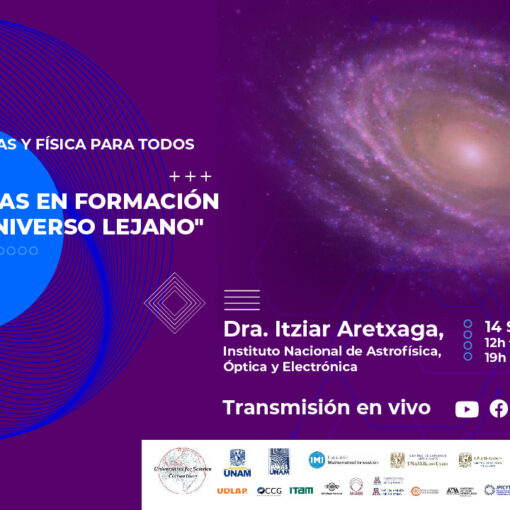Also available in: Español (Spanish) Euskara (Basque)
AzTEC1 is a distant galaxy with an unusual star formation rate 2000 times greater than that of the Milky Way. What causes this extreme virulence? In this astronomy article to be published ApJ we tell you what, and the explanation to all public can be found in this post.
In this previous Twitter thread I told you that ALMA data reveals that AzTEC1 is an unstable rotating disk. In it, the formation of stars conforms to a law of contraction of molecular clouds regulated by turbulence..
 New ALMA data in the ionized carbon emission line allow the disk to be seen with better resolution (~ 0.09 arc seconds, ~ 1 dime at 40km). This allows us to identify two bright regions in AzTEC1 which are not part of the rotating disk.
New ALMA data in the ionized carbon emission line allow the disk to be seen with better resolution (~ 0.09 arc seconds, ~ 1 dime at 40km). This allows us to identify two bright regions in AzTEC1 which are not part of the rotating disk.
The [C II] -2 ionized carbon nodule is 6000 light years away from the center of AzTEC1, along the minor axis of rotation of the disk. It has a relative velocity of 200 km / s. This component probably has 10 times less mass than the entire rotating disk.
The relative speed of nodule [C II] -2 indicates that it does not rotate together with the disk, and it may be a component that AzTEC1 is cannibalizing. Giant galaxies engulf dwarf galaxies around them. This is a process seen even in our Milky Way.
In turn, the impact of a nodule with 1/10th of the mass of the disk, filled with gas, must contribute to the instability of the rotating disk and cause greater star formation in AzTEC1. This may be one of the causes of the virulence of star formation in this system.
The article is led by our Japanese NAOJ collaborators, headed by Ken-Ichi Tadaki, with the participation of Min S. Yun ((UMass-Amherst) and myself (INAOE).
Translation of my unrolled thread of 02/10/2020



